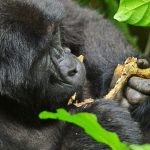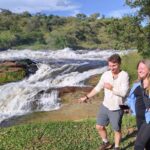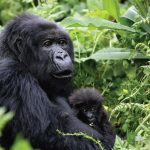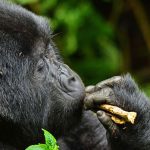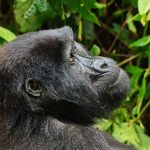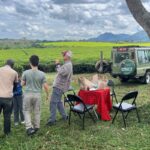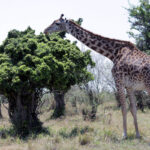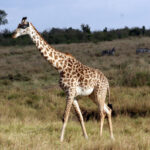What Are the Rules and Regulations for Visiting Queen Elizabeth National Park?
Queen Elizabeth National Park, one of Uganda’s premier wildlife destinations, offers a unique opportunity to experience a diverse range of ecosystems and wildlife, from tree-climbing lions and elephants to over 600 bird species. As with any protected area, there are essential rules and regulations in place to ensure the safety of both visitors and the park’s wildlife. Following these guidelines helps preserve the park’s ecological integrity while also contributing to sustainable tourism and wildlife conservation efforts. Before embarking on your adventure in Queen Elizabeth National Park, it’s crucial to understand these rules and regulations to make the most of your visit while contributing positively to the environment.

Entry Requirements and Park Fees
One of the first things to consider when planning a visit to Queen Elizabeth National Park is understanding the park’s entry requirements. All visitors must pay an entrance fee to access the park. These fees vary depending on the type of visitor, such as foreign tourists, East African residents, or Ugandan nationals. The fees collected go directly toward park management, conservation efforts, and local community development, which helps ensure the sustainability of the park. Visitors should also ensure they have the necessary documentation, such as a valid passport or local ID, and purchase entry tickets from the park’s gate or nearby lodges and tour operators.
For those interested in guided tours, it’s recommended to book with licensed safari operators who can offer knowledgeable guides. Not only does this enrich your experience, but it also supports local businesses and ensures you stay within the park’s rules. Tour operators like Primate World Safaris also provide permits for special activities such as chimpanzee trekking and boat safaris on the Kazinga Channel. When entering the park, it’s essential to follow the operating hours and gate regulations, typically opening early in the morning and closing by late evening.
Code of Conduct for Visitors in Queen Elizabeth National Park
Once inside the park, visitors are expected to adhere to a strict code of conduct that promotes safety, respect for wildlife, and environmental preservation. The most critical guideline is maintaining a safe distance from animals. This is particularly important for large mammals such as elephants, buffalo, and lions, as they can be unpredictable. Tourists should refrain from getting too close to these animals or attempting to feed them, as this could alter their natural behavior and potentially lead to dangerous situations. Staying in your vehicle during game drives is the safest way to observe wildlife from a distance, and passengers should always remain seated with their windows closed when driving.
For those engaging in more interactive activities like chimpanzee trekking or gorilla trekking, there are additional specific rules. Trekking groups must be limited to a small number of participants (usually 8 people) to minimize disturbance to the animals and the environment. Visitors must maintain silence and avoid sudden movements when encountering primates. It’s crucial to follow all instructions given by your guide, as they are experienced in reading animal behavior and ensuring that the interaction remains respectful and non-intrusive. These regulations are designed to minimize stress on the wildlife and contribute to their conservation.
Responsible Behavior During Boat Safaris and Nature Walks
Queen Elizabeth National Park is also famous for its boat safaris along the Kazinga Channel, where visitors can enjoy close-up views of hippos, crocodiles, and an array of birdlife. During boat safaris, visitors are reminded to respect the wildlife and avoid making loud noises or engaging in any activities that could disturb the animals. Boats are typically piloted by trained guides who are well-versed in both safety protocols and the behavior of wildlife. Visitors are not allowed to disembark from the boat in certain areas to prevent disturbing sensitive habitats, particularly those inhabited by large animals like hippos.
For those who prefer exploring the park on foot, guided nature walks are another exciting way to experience the park. However, the rules for walking safaris are strict. Visitors must always be accompanied by a trained ranger to ensure safety. Walking in the park without a ranger is prohibited, as wild animals may be encountered, and the guides are skilled in navigating these risks. Along the walks, tourists are advised not to pick plants, disturb animals, or stray off the designated trails, as doing so can cause lasting damage to the ecosystem and disturb wildlife habitats.
Environmental Conservation and Leave No Trace Policy
A key rule for visiting Queen Elizabeth National Park and other protected areas is the “Leave No Trace” policy. This policy emphasizes the importance of minimizing human impact on the environment by ensuring that visitors do not leave behind litter, disrupt vegetation, or disturb wildlife. Tourists need to dispose of waste properly and use designated waste bins or carry out their trash. The park authorities have made significant strides in waste management, with several eco-friendly initiatives in place, but they rely heavily on visitors to help maintain cleanliness and preserve the beauty of the park.
For those traveling in groups, tour operators often provide reusable water bottles to minimize plastic waste. Visitors should avoid bringing non-biodegradable items such as plastic bags, which pose a significant threat to wildlife and the environment. Additionally, the use of plastic bottles and single-use plastics is discouraged, and many accommodations within the park provide alternatives like glass bottles or refill stations. When visiting remote areas of the park, it’s recommended to bring only essential items to prevent unnecessary waste.
Interaction with Local Communities and Respect for Cultural Heritage
When visiting Queen Elizabeth National Park, it’s also important to respect the local communities that surround the park. Many of these communities rely on tourism for their livelihood, and it’s essential to engage with them respectfully. Visitors should avoid encroaching on local lands or interfering with traditional practices. If interested in visiting nearby villages, it’s a good idea to arrange such visits through the park’s approved tourism operators to ensure that interactions are respectful and beneficial to the community.
In addition to respecting local communities, visitors should also be aware of the cultural significance of the park. Queen Elizabeth National Park is located in an area that has cultural and spiritual importance to the indigenous people. Therefore, visitors should avoid any actions that may disrespect sacred sites or traditions. Being mindful of local customs and showing appreciation for cultural heritage will contribute to a positive experience for both tourists and the local people.
Safety Regulations for Wildlife Viewing and Trekking Activities
In addition to wildlife viewing, many tourists come to Queen Elizabeth National Park for trekking activities, including chimpanzee and gorilla trekking. These activities are subject to strict safety regulations to ensure both the safety of the visitors and the protection of the animals. In the case of gorilla trekking, for example, trekkers are required to maintain a safe distance (at least 7 meters) from the gorillas to minimize the risk of disease transmission. The number of visitors in each trekking group is limited, and permits are issued to help control the number of trekkers and reduce human impact on the gorilla populations.
Guides for trekking activities are well-trained and equipped to handle any situations that may arise during the trek. For example, if a visitor is feeling unwell or becomes too tired during a hike, the guide will help them navigate back to the starting point. It is also advisable to bring appropriate clothing, including sturdy hiking boots, rain gear, and plenty of water. Following the trek’s rules ensures that the activity is conducted safely for both visitors and animals.

Conclusion
Queen Elizabeth National Park offers a once-in-a-lifetime opportunity to experience Uganda’s exceptional wildlife and natural beauty. However, to maintain the park’s ecological balance and ensure a safe and enjoyable visit for all, it’s essential to follow the rules and regulations in place. These rules focus on protecting wildlife, minimizing environmental impact, and promoting responsible tourism. By respecting the park’s guidelines and working together with the local community and park authorities, visitors contribute to the continued success of conservation efforts and help sustain Queen Elizabeth National Park as a world-class wildlife destination. Whether you are exploring the savannah on a game drive, embarking on a boat safari along the Kazinga Channel, or trekking through the dense forest to encounter mountain gorillas, following these rules ensures a fulfilling and respectful experience for everyone involved.

